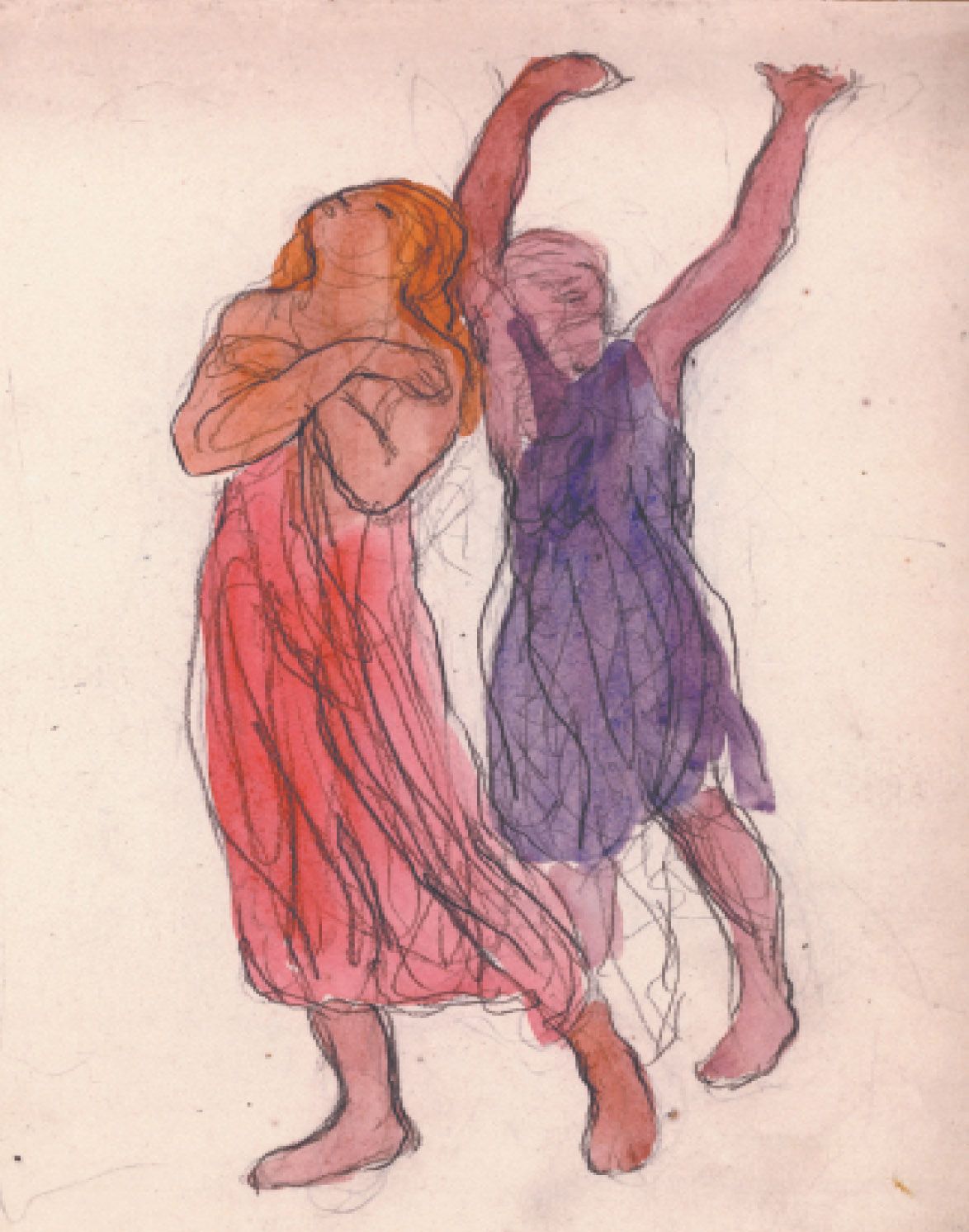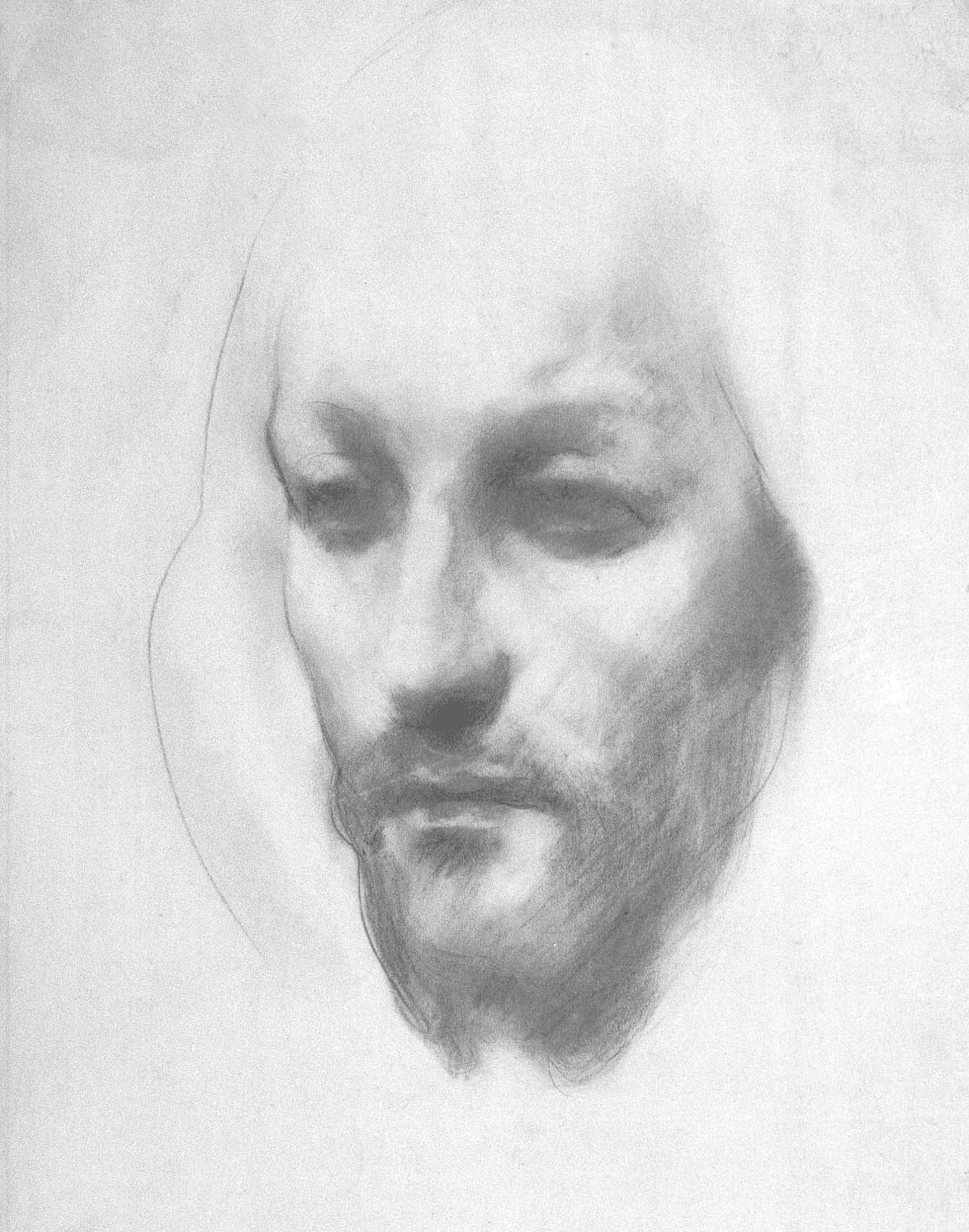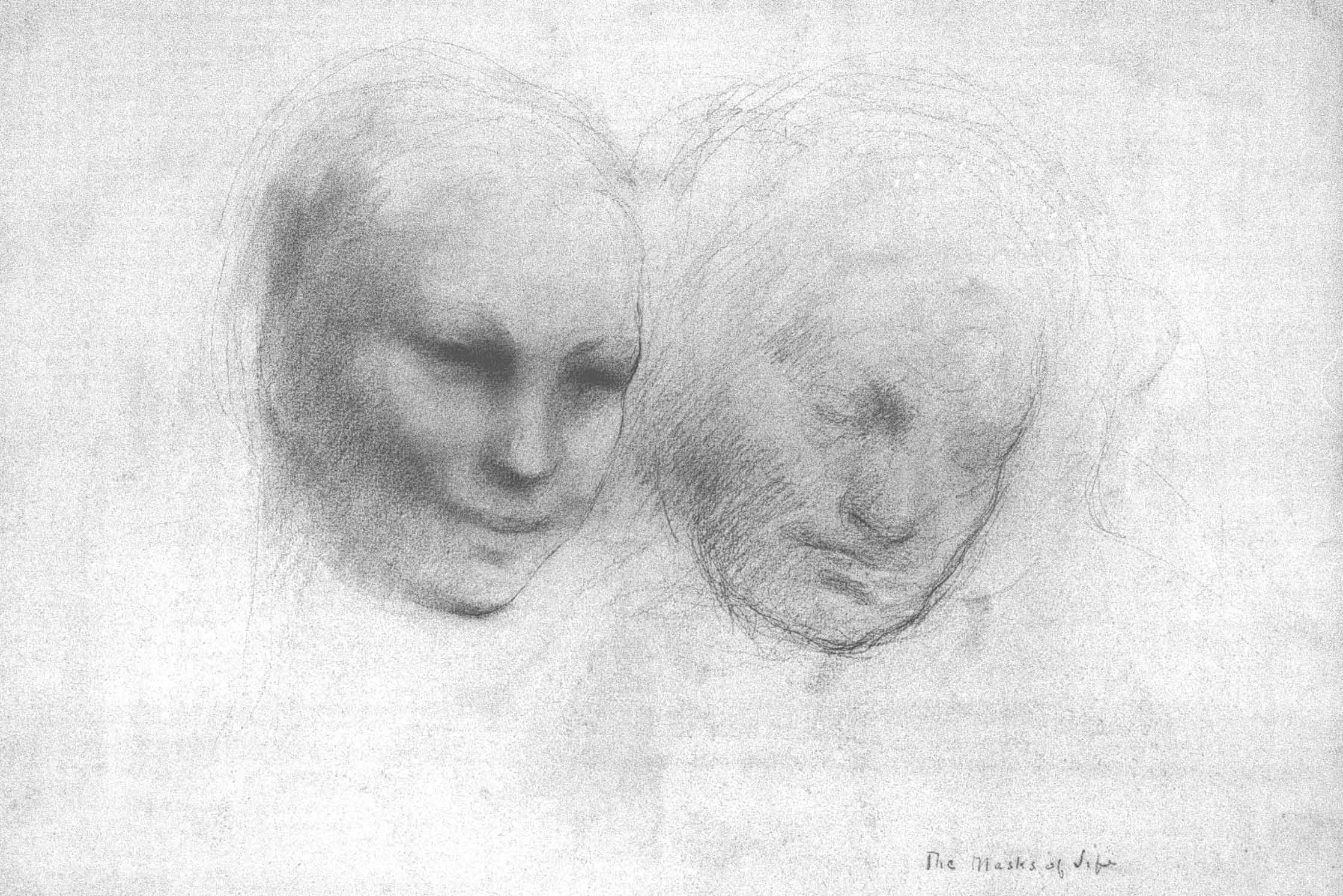The Art of Manuscripts
The oldest manuscript at the King Faisal Center For Research and Islamic Studies. The manuscript page of the Holy Qur’an, is approximately 1,300 years old, written on deer skin (parchment) in Kufic script. Courtesy of the center.
I visited the headquarters of the King Faisal Foundation, one of the remarkable buildings in Riyadh that was designed by the brilliant Japanese architect Kenzo Tange. The splendid building consists of two high-rise buildings, each in the form of a symmetrical triangular prism with opposite vertices. The two buildings are connected by two bridges on their upper levels.
The empty space between the two buildings frames the mosque of the center, which also has a unique and extraordinary design as the architect replaced the dome with a hollow cylindrical shape that resembles an inkwell and replaced the minaret with a tall, pilaster tower. Both the building and the mosque resemble an open book, pen, and inkwell. This outstanding structural design reflects the center’s goals and concern for preserving and disseminating knowledge.
The building is a part of a complex that includes a library, museum, and administrational offices.
The purpose of this visit was to explore the center’s holdings, visit the museum and its two exhibitions, and learn more about the services the center provides for researchers and authors for the sake of preserving heritage and nourishing culture.
During this visit, I conducted an exclusive interview with Ammar Saeed Tamalt, Head of the Department of Special Collections at the King Faisal Center For Research and Islamic Studies, who shared with me valuable information about the manuscripts the center owns and the role of art and sketches in them.
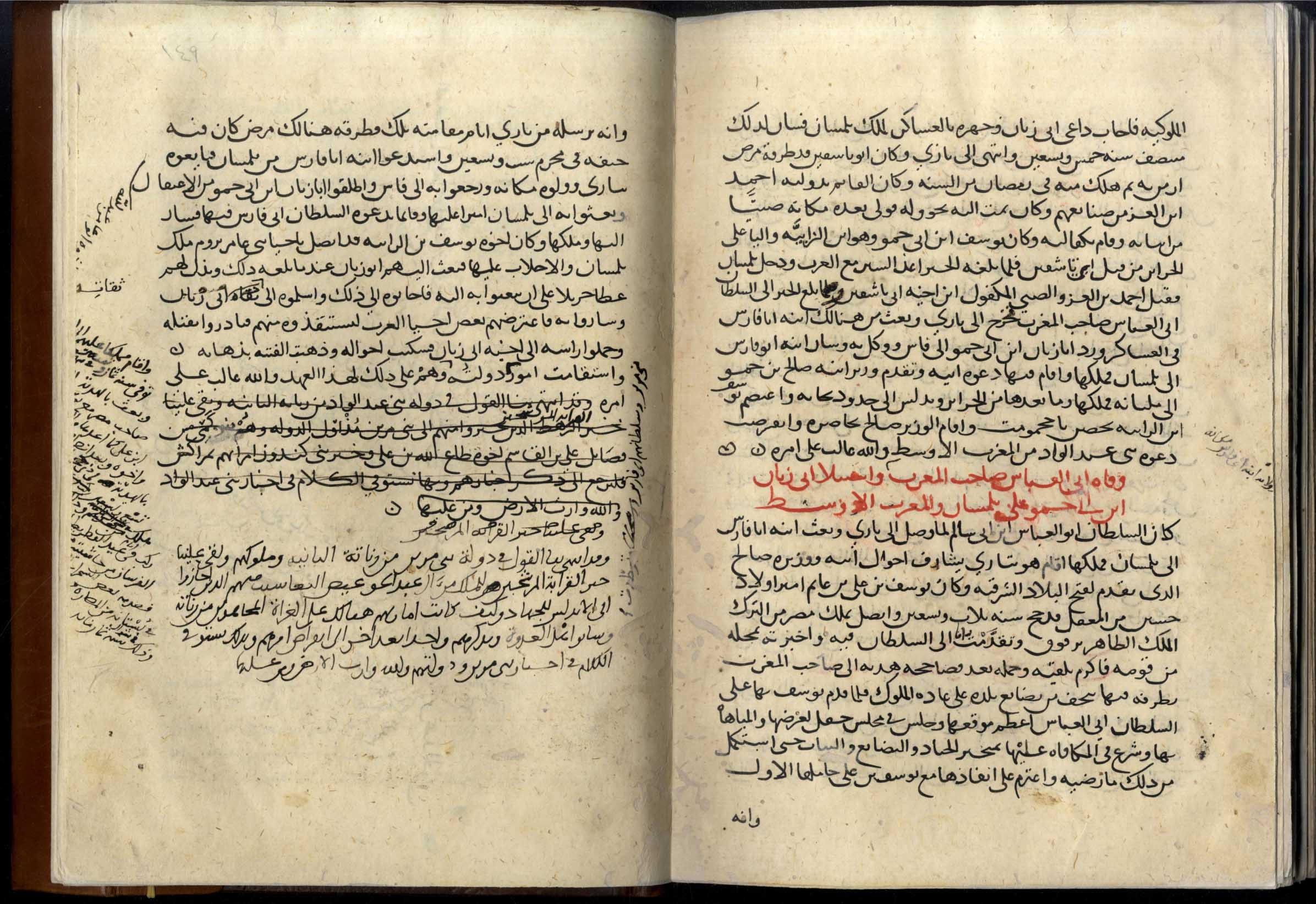
Al-ʿibar wa Dīwān Al-mubtadaʾ wa’l-ḫabar. Author: The historian and sociologist, Ibn Khaldūn Al-ḥaḍramī A’t-Tūnisī (died 808 AH/1405 AD). Written before 600 years (Naskh script) in 9th AH/15th AD century, Egypt. One of the most significant books on the history and analysis of human societies.This copy contains the author’s handwriting, in addition to his comments and amendments. It also contains the handwriting of the famous historian Al-Maqrīzī. Courtesy of the center.
Q. Tell us about the King Faisal Center For Research and Islamic Studies and about the manuscripts collection.
The King Faisal Center For Research and Islamic Studies was founded in 1983, nearly 40 years ago. The center’s mission is to spread knowledge, enable scientific research, and preserve the humanitarian heritage. The center is specialized in manuscripts, publications, magazines, and everything related to culture and science. The library has half a million printed volumes and about 28,000 original manuscripts [manuscript is a hand-written book]. The center supports and produces original research in humanities and social studies and organizes a variety of exhibitions to educate the audience about the center’s collections and efforts in preserving heritage.
Q. What makes the center’s collection of manuscripts so unique?
The center owns a collection of the rarest manuscripts in the world, such as those written by the hands of their original authors, which are called (Autograph). The center owns almost 200 scriptures, all written by their original authors’ hands. In the “Asfar” exhibition, we displayed only 9 of them; such as the manuscript of Ibn Khaldun. This collection describes to us some of the magnificent cultural and humanitarian heritage our early scholars had left us and symbolizes the eternity of culture, and the dissemination and survival of knowledge and sciences.
Q. What are the oldest manuscripts in the center’s collection?
The center owns very old manuscripts, known as Millennium- meaning that they are more than a thousand years old; as the ancient Qur'an Scriptures were written on leather or carved on stones and bones. The oldest manuscript in the King Faisal Center is a manuscript page of the Holy Qur’an, now approximately 1,300 years old, written on deer skin (parchment) in old Kufic script. Today, it is estimated that the center owns 25 pages of the Qur’an Scriptures inscribed on leather.
Q. When were drawing and coloring introduced in manuscripts?
Incorporating art in manuscripts started very long ago. However, they were very simple at that time, where some primitive decorative shapes were used, such as squares or circles at the start or end of the Quranic verses, especially in the old Kufic scriptures of the Qur’an.
Some experts and researchers considered these simple artistic effects as ornamentation or decoration.
In some scriptures, they appear as plain frames and lines the scribes draw with their pen after finishing with writing without using any colors or shadows; as some calligraphers embellished their manuscripts on their own since there wasn’t a clear specification or distinction for the roles of the scribe, illustrator, or gilding artist at the time.
In the era of the Mamluk state (at the end of the seventh century AH and the thirteenth century AD), scribes started using colors and decorative ornamentations in their manuscripts and coloring some key paragraphs, such as the headlines or chapters’ titles; which were typically colored in red to distinguish them from the body texts, which were in black.
Decorations in manuscripts were limited only to the sacred scripture of the Qur’an due to its high cost. Not only that but also limited to coloring and decorating certain pages, not the whole Scripture. Artists back then would usually decorate the beginning and the end of the Quranic Scripture, and some might decorate the middle as well. They would decorate the first facing pages of the Qur’an (Surat Al-Fatihah and the beginning of Surat Al-Baqarah) with marvelous symmetrical drawings.
These two pages were called “Sirlouha or Sarlouh”, which is a compound Persian word meaning “the main paper.”
The Persians began adding drawings (miniatures), similar to the Persian Mathnawis that include historical tales, among the most famous are the story of “Kalila and Dimna” and “the Epic of the Shahnameh”; which contributed to the flourishing and advancement of the art of decorative ornamentation.
In the King Faisal Museum of Arab and Islamic Art, that’s located in the center, you can see the manuscript of (Layla and Majnun ) that’s decorated with beautiful miniatures from the Safavid era in the nineteenth century AD.

Manuscript of Layla and Majnun, in Persian- written by: the Persian writer Maktabi Shirazi (died: 941 AH / 1534 AD). Transcribed in Iran, 13th century AH / 19th CE. A famous chapter in the story (Majnoun Laila), with miniatures from the Safavid era’s style. Courtesy of the center.
Q. What is the difference between manuscripts and miniatures?
Manuscripts refer to the hand-written heritage. Our ancestors gave considerable attention to manuscripts as they were the only method to preserve the knowledge and sciences they had produced and originated. In its early beginnings, manuscripts were only used to write the Quran and document the Prophetic Hadiths. They, the scribes and artists, later transformed them into invaluable masterpieces the world’s top prestigious museums and libraries compete over.
Calligraphers enjoyed a prestigious position since they were engaged in writing the Quranic scriptures in addition to the literature and poetry manuscripts. The great demand for owning Islamic manuscripts encouraged calligraphers to improve their manuscripts, they, therefore, collaborated with illustrators, bookbinders, and gilding artists. By their hands, the making of Islamic manuscripts, saturated with their stunning drawings, colors, and ornaments, grew and flourished.
Miniatures, on the other hand, is the art of decorating and beautifying texts with tiny illustrational or explanatory drawings that better explain the topic of the written text. These drawings, despite their tininess, have lots of details and artistic elements, such as human, animal, or plant illustrations made with watercolors and gold on paper techniques.
Q. Tell us about the illustrations with the most details in the manuscripts?
Kalila and Dimna's book is considered one of the prominent heritage books in human history. It managed to significantly stimulate and influence the imagination of numerous authors across all cultures. The manuscript copy of Kalila and Dimna, now exhibited in the Asfar exhibition, contains plenty of artistic aesthetics, and it’s the oldest version that has Arabic illustrations since most of the drawings in Kalila and Dimna manuscripts around the world are either Persian or Indian.
The book also is one of the rarest historical manuscripts as it dates back to the year 747 AH, and is considered the second-oldest version with miniatures in the world, preceded only by the copy in the National Library of Paris which dates back to 646 Ah. when looking closely at the drawings of the first manuscript and comparing them to the one at the King Faisal Museum, we can easily see the difference between the Arabic and Persian drawing styles, in facial features, costumes, and even color choices. It’s also easy to identify the remarkable characteristics of Islamic art that avoid personification drawings, where the drawing is two-dimensional and flat.
Such miniatures shed light on the different types of social lives by highlighting clothes, furniture, buildings, tools, different belongings, and natural backgrounds. This is in addition to the drawings of human figures that demonstrated the ethnic diversity in the Islamic society. Miniatures are also used for entertainment with their vibrant and vivid colors and to better explain and clarify the texts of the literature and history books specifically with visual demonstrations of the topics. These manuscripts add even more value to the original worth these great books and manuscripts have.

Kalīla wa-Dimnah. Translator: Abu Muḥammad ʿAbdullāh Ibn Al-Muqaffaʿ (died 142 AH/759 AD). Written before 700 years (Naskh script) in 747/1346, Baghdad. It is believed to be the second oldest copy in the world, completed with miniatures on fables of wisdom told by animals. This knowledge moved from India to Central Asia to Baghdad until it reached the world. This copy belongs to the private collection of the late King Faisal. Courtesy of the center.
Q. Are there manuscripts where drawings are preponderance?
The center has a huge printed book that is so rare that it’s considered a manuscript; there are only 5 copies left of this book. The book is the first illustrated encyclopedia about Egypt written by a group of scholars on the order of Napoleon Bonaparte and is considered an important reference for researchers. The book (Description de l'Egypte) is a 14-volume set with large pages (known as Mammutfolio, 1 m X 0.81 m). the book contains drawing with small details documenting Egyptian life during the French campaign, which lasted from 1798 to 1801. Almost 150 scholars accompanied the campaign and wrote their comments, described and drew everything they saw from traditions, customs, animals, birds, temples, and monuments.
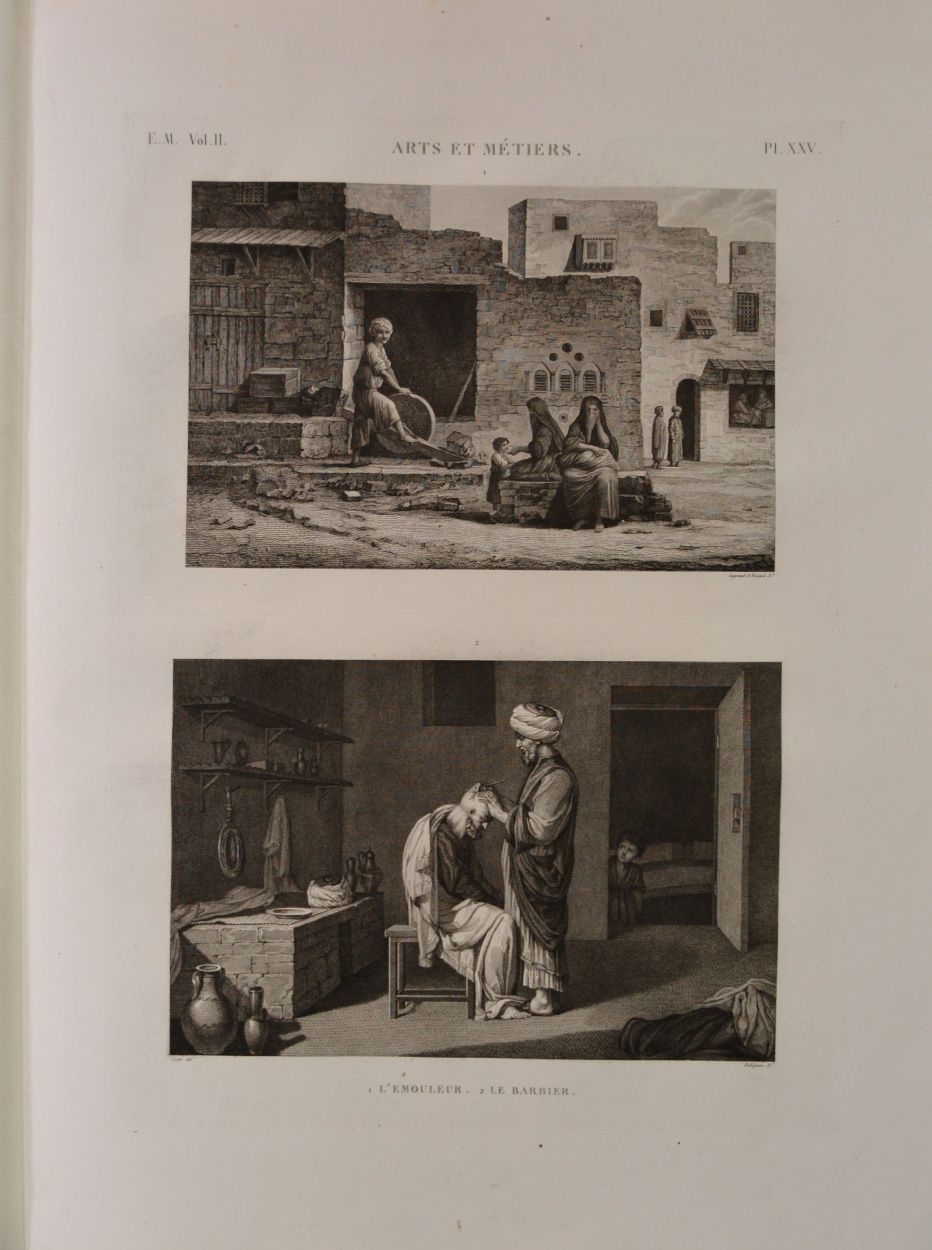
Description de l’Egypte. Written by a group of scholars under the order of Napoleon Bonaparte. Printed before 212 years in 1809 AD, Paris. This first Imperial Original Edition is one of the five copies divided into 14 volumes existing in the world and considered as the first illustrated encyclopedia about Egypt. Courtesy of the center.
The drawings took a long time as the printing process was complicated; as a result, the drawings were engraved on copper plates. That’s what makes the book exceptional. Description de l'Egypte was printed in 1809 in Paris, over 200 years ago, in only two editions: the first was in Napoleon’s era and is called the first imperial edition, and the second was after Napoleon's death and is called the Royal edition.
Some countries have the Royal edition but the imperial one is extremely rare. However, our center currently displays the imperial edition in “Asfar” exhibition. visitors of the exhibit get the chance to view and examine this manuscript and the efforts of scholars and artists who described Egypt’s culture, geography, anthropology, people, mosques, and markets. looking at these manuscripts feels like going back in time to the 19th century; that’s why it’s considered a treasure for humanity.
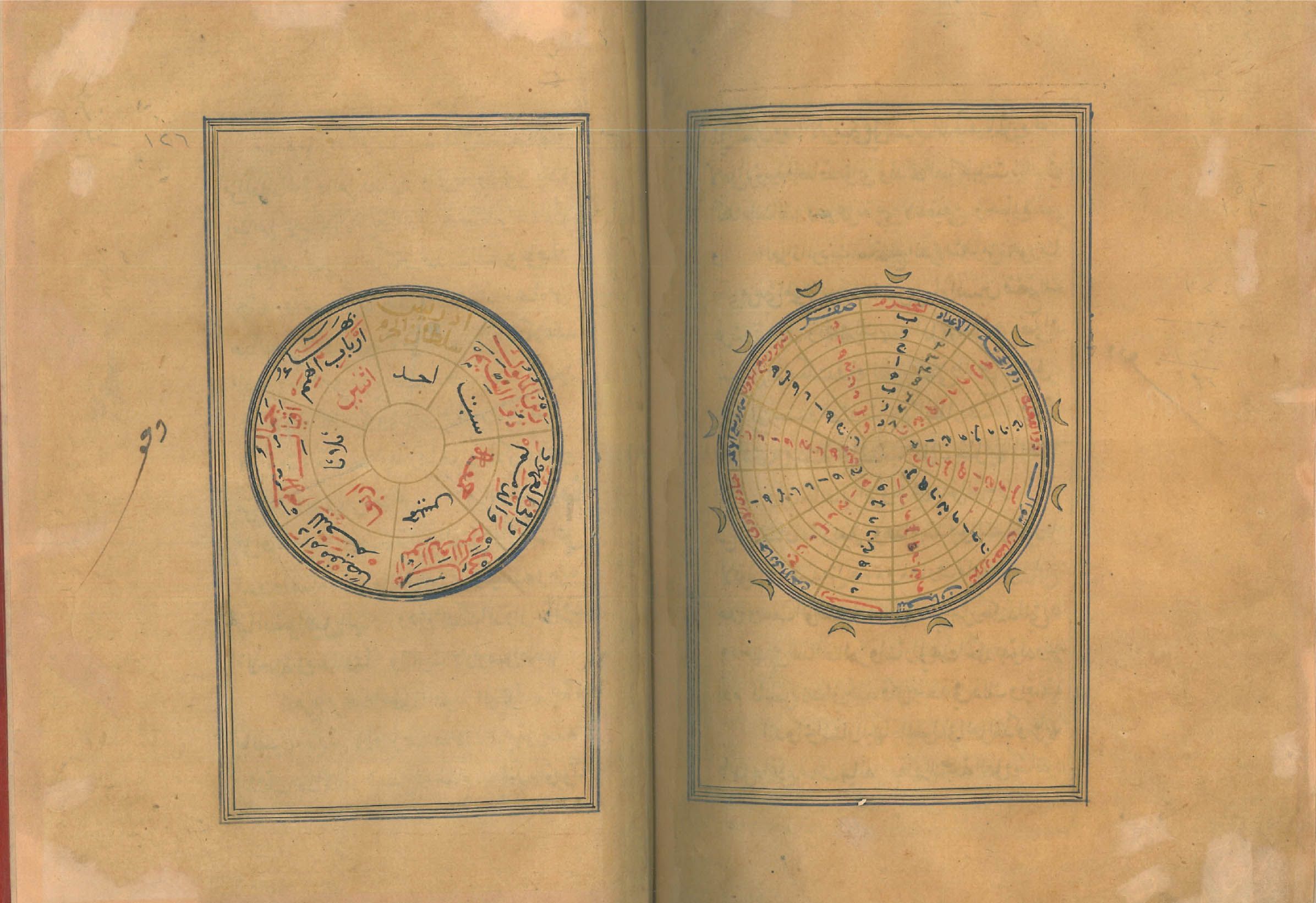
The cleverness of the initiation in relation to the month and crescent. Written by The Great Mufti of the Grand Mosque in Makkah, Abu al-Wajaha, Abd al-Rahman bin Issa al-Murshidi al-Makki (d. 1037 AH / 1627 AD). Inscribed in Turkey, 11th AH/17th century AD. Manuscript on astronomy and Islamic jurisprudence (Fiqh) topics. Courtesy of the center.
Q. Is there a particular repetitive theme or style in manuscripts?
Manuscripts usually have a broad variety of topics, covering more than 50 branches of sciences and knowledge, mostly in Islamic studies, and a large group of them are in experimental sciences.
Our center owns more than 1500 manuscripts in science, 65 of which are currently exhibited in Takween exhibition; showing the Muslims’ contributions to the field of engineering in addition to the invention and improvement of measurement and drawing tools.
Scientific manuscripts, such as medical, mathematical, geographic, astronomical, botanical, and biological manuscripts, have different types of miniatures; since they are used to clarify and explain the scientific text that has no artistic elements; Just purely scientific drawings designed with accuracy and scientific integrity, such as drawings of medical and surgical tools, maps, and many more.

Ūnsu l-muhağ wa-ḥadāʾiq l-farağ. Written by the traveler Abu Abdullah al-Idrisi, the first to draw a map of the world (died: 560 AH / 1165 AD). writt 300 years ago in the Naskh script in the 12th century AH / 18 AD, Mashhad. One of the first and best books on geography. Equipped with 73 maps, the flag has traveled from Morocco to Sicily to Central Asia to the world. This copy belongs to the private collection of the late King Faisal. Courtesy of the center.
One of the main manuscripts in Geography is the manuscript made by the traveler Abu Abdullah El Idrisi, which contains nearly 73 maps he personally drew during his trips around the world. El-Idrisi was the first to draw a map of the world ( in 1154 AD).
The manuscript was printed almost 300 years ago in 1703 and is also currently displayed at Asfar exhibition. The Museum of King Faisal also displays manuscripts in marine sciences, written by Ahmed Al-Najdi, backed with astronomical and geographical drawings. One can’t help but be impressed by the significant role king Faisal center does in demonstrating the contribution of the Islamic civilization to humanity in all domains, and their great efforts in restoring and preserving valuable manuscripts.
Asfar is the Arabic plural of the noun sifr, it is a Quranic word meaning tome or large book. The word also appears in a poem by the "Prince of Poets", Ahmad Shawqi (d.1932/1351AH)
The sons of the world are inscribed in an ancient book (sifr), and the books (asfar) of the ancients will revive your fortune; I see the dead, gathered in resurrection; how many a dead one have the works of the wise revived!
The Asfar exhibition, which is open for visitors daily from 9:00 am to 9:00 pm, offers a rare opportunity to view hundreds of manuscripts, maps, and rare drawings dating back hundreds of years.
Manuscripts to discover:
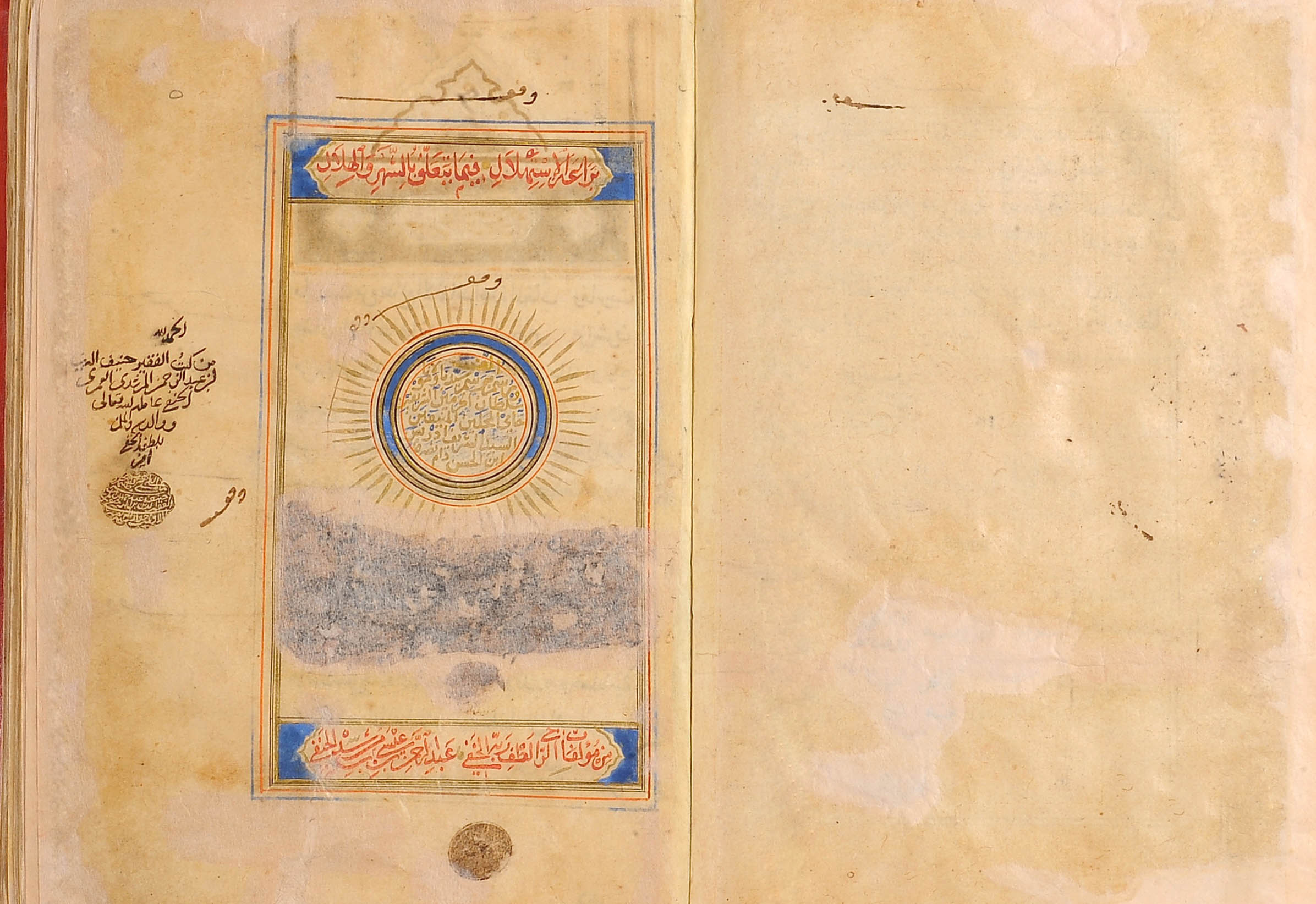
The cleverness of the initiation in relation to the month and crescent. Written by The Great Mufti of the Grand Mosque in Makkah, Abu al-Wajaha, Abd al-Rahman bin Issa al-Murshidi al-Makki (d. 1037 AH / 1627 AD). Inscribed in Turkey, 11th AH/17th century AD. Manuscript on astronomy and Islamic jurisprudence (Fiqh) topics. Courtesy of the center.

‘Hadīṯ Naww’ written by Amir Muhammad bin Hassan Masoudi (died: 10-11 AH/16-17 CE) and was printed in the year 1142 AH / 1730 AD, 300 years ago over the history of Western India. Backed with 13 miniature images and 3 colored geographical maps. From Ibrahim Muteferrika publications. Courtesy of the center.
